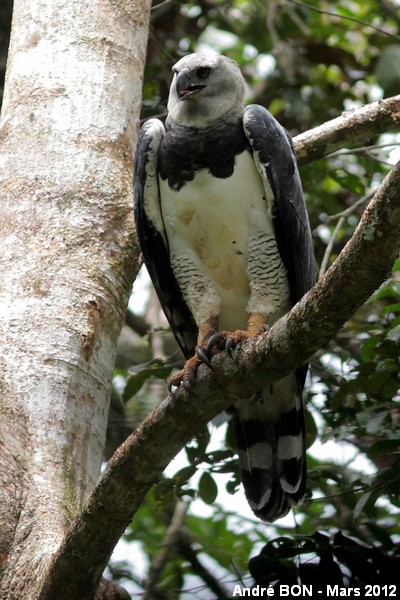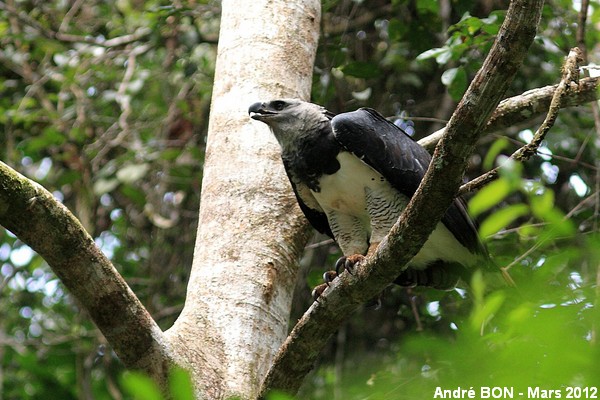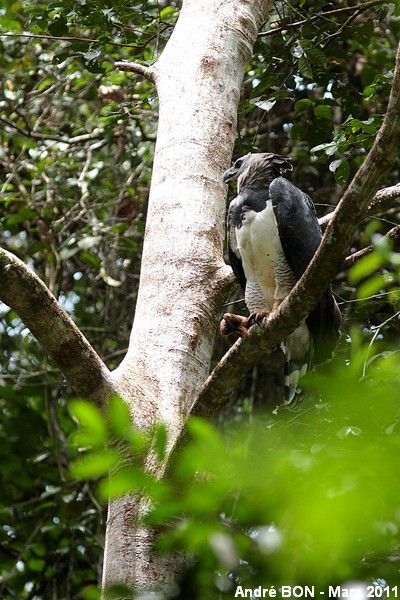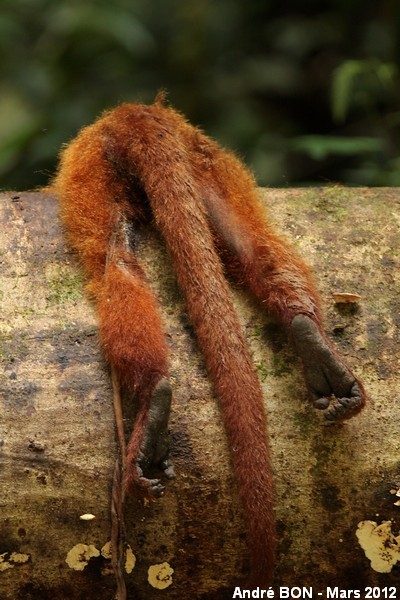



| Harpy Eagle (Harpia harpyja (Linnaeus, 1758)) |




|
|
Scientific name: Harpia harpyja (Linnaeus, 1758) Common name: Harpy Eagle Other names: American Harpy Eagle French name: Harpie féroce Order: Accipitriformes Family: Accipitridae Size: Size: 86 to 107 cm; Wingspan: 176 to 200 cm; Weight: 6 to 9 kg. Females are larger than males, these last ones do not exceed 5kg. Habitat: Dense tropical rain forest. The Harpy Eagle flies thru the canopy with an acrobatic flight. Food: Monkeys, Sloths and other mammals or arboreal animals, often caught from the branches on which they move, birds and reptiles. Preys are first eaten on site and then transported when the remaining weight permits. The Harpy Eagle is able to fly with a load of 4kg. Nesting: Breeding pairs are formed for life. The nest is built between 30 and 50 metres high in a large tree. This is a large platform made of twigs and measuring about 1.5 metre in diameter. There is one brood every two or three years, sometimes with two eggs but only one chick is raised. Migration: Sedentary. Geographic area: Central America and South America east of the Andes, from southern Mexico to northern Argentina. |
The Harpy Eagle's plumage is black and finely bordered with white on the upper side and white on the underside. The head is pale grey and separated from the white belly by a wide black band located on the upper part of the chest. It bears a double erectile crest which is slightly darker. The tail is black and crossed by three grey stripes on the upper side and by three white stripes on the underside. The underside of the wings is striped with black and white. The thighs are finely crossed with black lines. The claws are very strong and they are about the same size as human hands. The Crested eagle (Morphnus guianensis) does not show the same dark band on its chest. |
| [To know more about the Harpy Eagle] [Next picture] [Top] |

|
I have observed the Harpy eagle while walking along the Roche-Bateau footpath near the small village of Saül. I have seen it landing at a few metres from the footpath and I have tried to slowly approach until it is worried by my presence and flies away. Having only 300mm lenses all the present pictures are cropped. |
| [To know more about the Harpy Eagle] [Next picture] [Previous picture] [Top] |

|
The claw size is really impressive and you easily understand why this bird of prey is considered as one of the most powerful in the world. |
| [To know more about the Harpy Eagle] [Next picture] [Previous picture] [Top] |

|
I have not had the pleasure of seeing the crest erect. Here is the picture where it is best visible. |
| [To know more about the Harpy Eagle] [Previous picture] [Top] |

|
The remains of this Red Howler Monkey, observed a few meters after on the edge of the trail, explain the presence of the Harpy Eagle. Unable to move its too heavy prey, it started to eat some on site. The other half of the monkey, not visible on the picture, has already been completely devoured. Being back to Saül I have spoken to other tourists who indicated to me that they had already seen the dead monkey body the day before. |